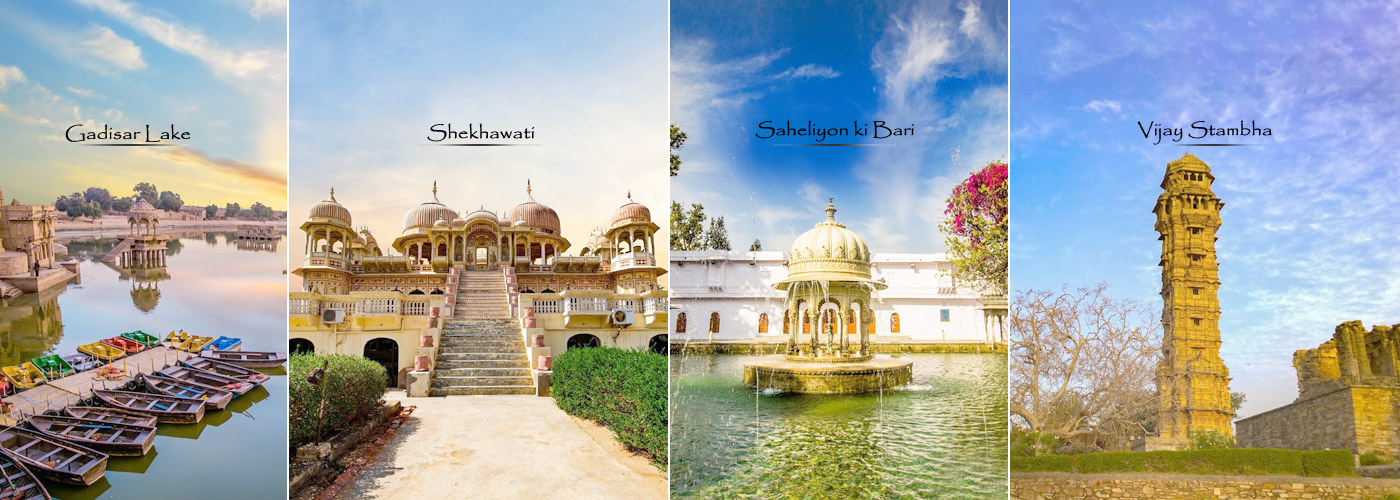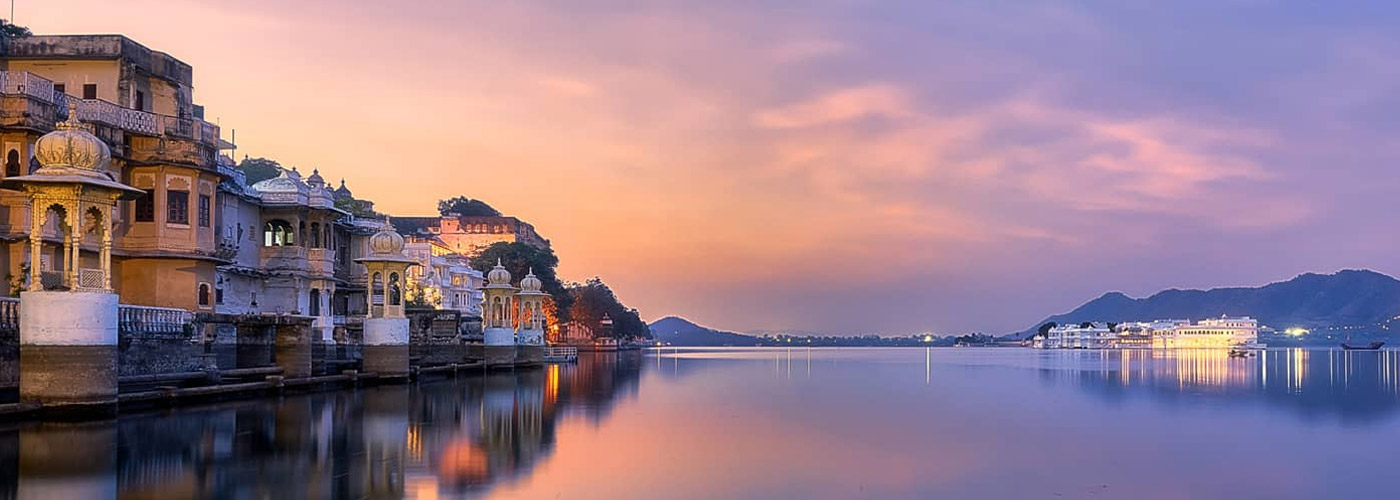Bundi B2B
Bundi B2B It is popularly believed that Nobel laureate Rudyard Kipling penned part of his famous novel ‘Kim’ in Bundi. In fact, so impressed was he by the place, that this is what he wrote about the Bundi palace:
‘Jaipur Palace may be called the Versailles of India … Jodhpur’s House of strife, gray towers on red rock, is the work of giants, but the Palace of Bundi, even in broad daylight, is such a palace as men build for themselves in uneasy dreams – the work of goblins rather than of men.’
Bundi is a magnificent town located around 36 kilometres from Kota. Dotted with palaces and forts, the place has a fairy tale quality about it. Bundi’s charm lies in its location –surrounded by orchards of orange, guava, pomegranate and mango trees, flanked by the Aravalli range and rivers and lined by fields of cotton, barley and wheat. Situated far from the crowds, it is the simple rural folk that lend Bundi its allure.
Bundi was once ruled by the Hada Chauhans. Many historians claim that it was once the capital of the great Hadoti Kingdom, which was renowned for its art and sculpture. However, in 1624, Kota separated and became an independent state and this marked the beginning of the downfall of Bundi. Whether that may be, Bundi still retains its charismatic medieval grandeur. And just like Jodhpur and Rajput, the architecture of Bundi also possesses a noticeable bluish hue, designed to keep houses cool during hot summer, in the intricately carved brackets and pillars.
Tourist Attractions
Some of the best places to visit in Bundi include palace ruins, bustling markets, and spiritual landmarks. Prepare for an exciting adventure and be on the look out for monkeys!
Tarargh Fort - 14th Century
This is one of the most impressive and in days gone by, impregnable forts in Rajasthan. It has four enormous water reservoirs which were built to cater to the water requirements of the fort. The panoramic view of Bundi and surrounding hills is magnificent, an ideal place to sit quietly and watch the sunset. Taragarh means the 'Star Fort' is the most impressive of the city's structures. It was constructed in AD 1354 upon a steep hillside. The largest of its battlements is the 16th century bastion known as the Bhim Burj, on which was once mounted a particularly large cannon called Garbh Gunjam, or 'Thunder from the Womb'. The fort is a popular tourist viewpoint of the city below. the fort has three tanks which never dry up. These tanks are right on top of the fort which sits on top of one of the hills surrounding the city. The technique is long since lost but the tanks survive as a testament to the advanced methods of construction and engineering in medieval India.
Kesharbargh 16th Century
This final resting place of Bundi's kings and queens, Kesharbargh is another fine example of Bundi's impressive architecture. The cenotaphs are beautifully crafted from fine yellow sandstone and marble.
Naval Sagar Lake - 18th Century
Seen as you enter the town and visible from the fort and palace is the square artificial lake, a temple dedicated to Varuna, the Aryan god of water stands half submerged in the centre. The reflection of the old city, the fort and palace can be seen in it's waters.
Rani Ji Ki Baori - 17th Century
Bundi is known for it's baoris of stepwells. Constructed by royalty and affluent members of society, they served as water reservoirs when there was a scarcity of water. The commisioning of a baori was considered a sacred act and a privillege. More than fifty baoris exist in and around Bundi and are a marvel of craftsmanship and architecture. The finest example being the Rani Ji Ki. Built in 1699 by mother-queen Nthavati Ji during her son Budh Singh's time it is adorned with finely sculpted pillars and arches. It is a multistoreyed atructure with places of worship on each floor.
Whilst in Bundi take the time to wander through the narrow streets, make your way through the bustling markets to the colourfull vegetable marked where an array of fresh local produce can be found, remember to take your camera, Bundi is a photoghraphers delight and most of the locals are more than happy to heve their photograph taken, remember it is courtesy to ask first.
Bundi Utsav
A pagent of resplendent heritage of the Hadoti celebrated every year after the Kartik Poornima. The programme includes folk/classical music and dance, arts and crafts, ethnic sports, turban competition and a fireworks display.
The Bundi Palace
It is situated on the hillside adjacent to the Taragarh Fort and is notable for its lavish traditional murals and frescoes. The Chitrashala (picture gallery) of the palace is open to the general public.
The largest of Bundi's baoris or stepwells is the intricately-carved Raniji ki Baori. Some 46 m deep, it was built in 1699 by Rani Nathavatji. The steps built into the sides of the water-well made water accessible even when at a very low level. The baori is one of the largest examples of its kind in Rajasthan.
The Nawal Sagar
It is a large square-shaped artificial lake in the centre of Bundi containing many small islets. A temple dedicated to Varuna, the vedic god of water, stands half-submerged in the middle of the lake. the lake feeds the numerous bavdis in the old city by creating an artificial water table.
The Nagar Sagar
The twin step wells are identical step wells crafted in pristine masonry on either side of the main spine of Bundi town. The kunds (pools) are currently full of waste from the ancient vegetable market in the vicinity.
The Dabhai Kund
It is also known as the jail kund, is the largest of the kunds in Bundi. Though slightly overgrown, it is well worth a visit for the spectacular carvings on the numerous steps leading down to the water level.
Things to Do
Bhimlet Waterfalls
Located around 35km from the town itself, the Bhimlet waterfalls are well worth wither hiring a motorbike or stretching to a rickshaw (around 700 rupees there and back.) In the heart of the surrounding rocky desert, the ground suddenly gives way to reveal a large canyon which is filled with lush vegetation and a stunning freshwater lake that is perfectly safe for visitors to swim in.
The Shiva temple that sits a little way up the steps leading down to the water is a enjoyable distraction with its own supply of fresh water but visitors are warned not to spend too long here after dark as the lake is a popular place for wild animals, including bears, who come here for an evening drink.
Kipling House
The place where the great British author wrote such classics as ‘Kim’ is a beautiful open plan house that is both a peaceful place to spend a day as well as a fitting tribute to its famous previous owner. The house sits on the banks of an enormous freshwater lake where locals bathe in the shadow of the nearby Shiva temple as well as scrubbing laundry on the stone ghats that flank either side. The lake is rather polluted however so it is unlikely that a swim is in order. Free admission makes for another fine reason to explore this location.
Taragarh Fort or 'Star Fort'
The Taragarh Fort has sat overlooking Bundi since construction was completed in 1354 AD. These fascinating remains are really quite extensive and as well as offering panoramic views of the town below are a detailed insight into the military history of the area. Admission to the palace (also in the ground of the fort) is 40 rupees but otherwise this whole area is free to be explored at visitor’s leisure. The man renting sticks for 10 rupees each on the road up to the fort may seem like he is embarking on a bad business venture but the fearsome red monkeys are very large in numbers within the ruins and a good strong stick to scare them off with may prove invaluable.
How to Reach
By Air : Nearest airport is Jaipur.
By Bus : Bundi is approachable by road from Kota (40 km),jaipur(206) and many other cities.
By Train : Train links are from Kota, Agra and many other cities.


